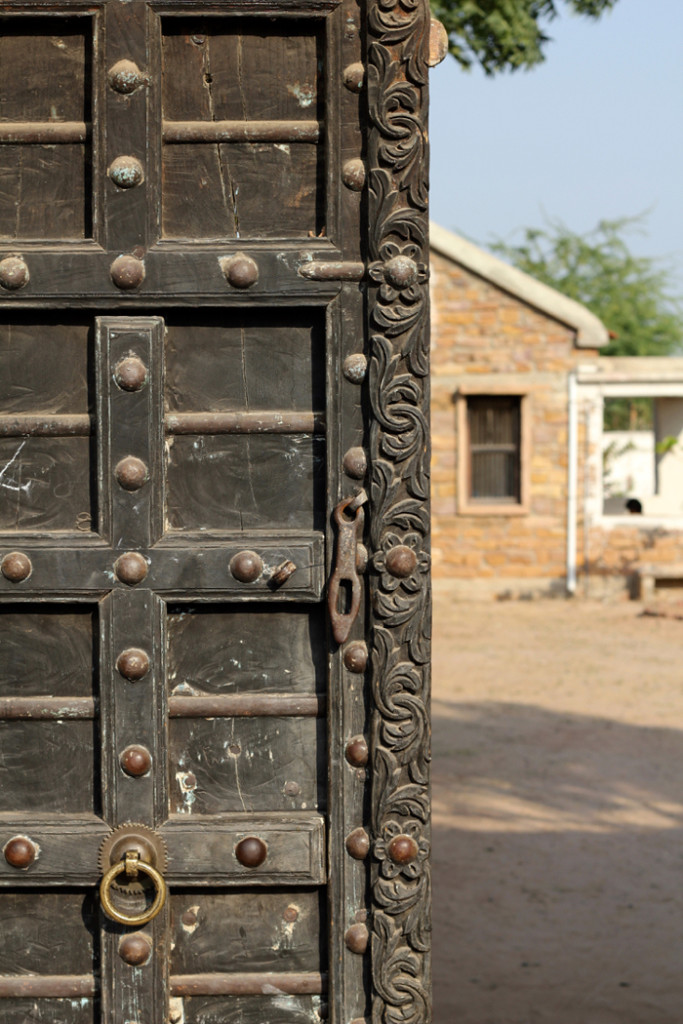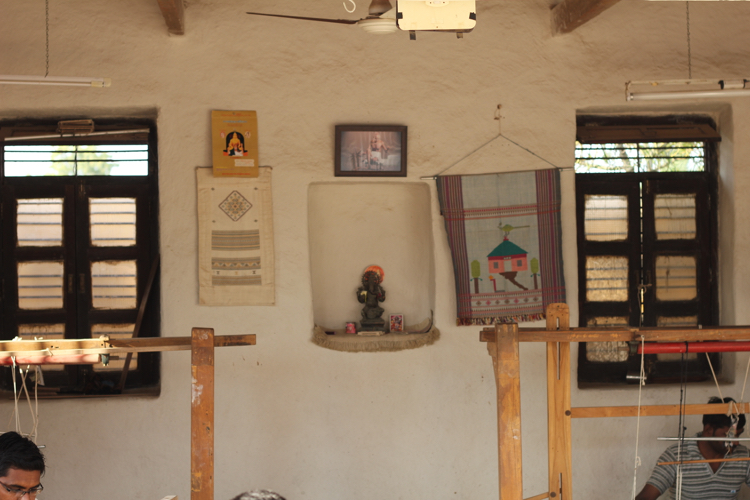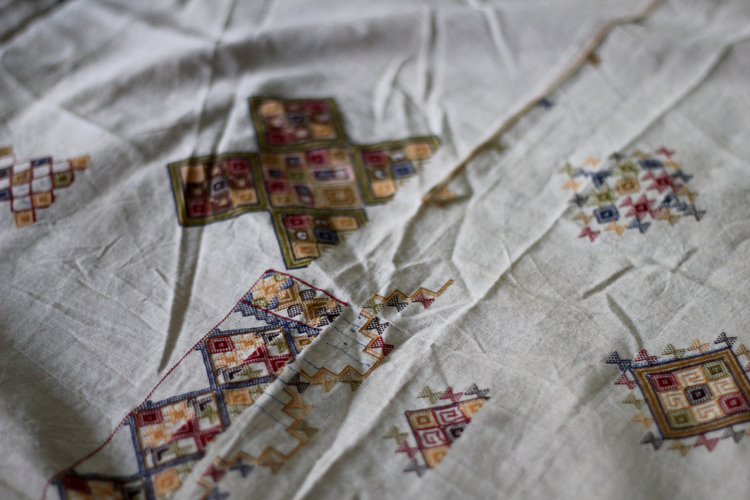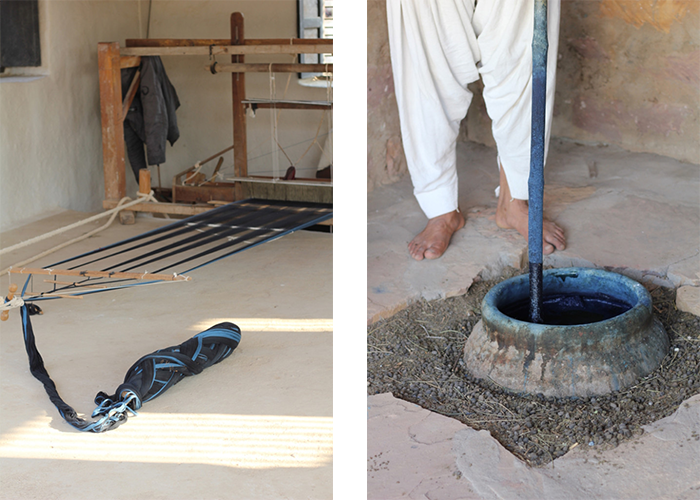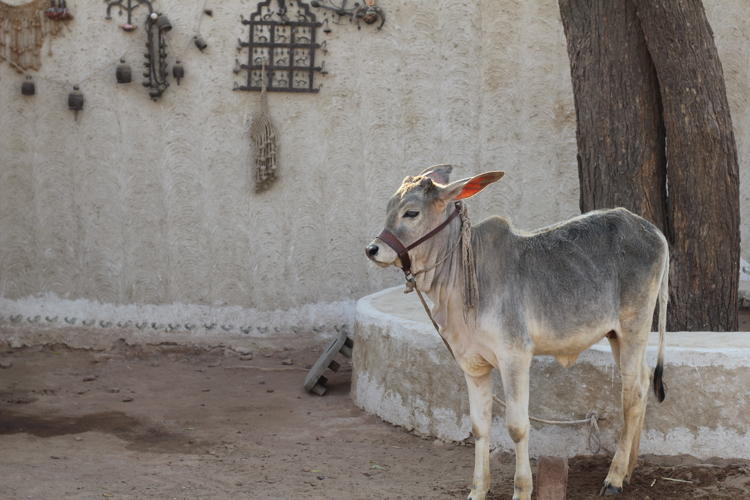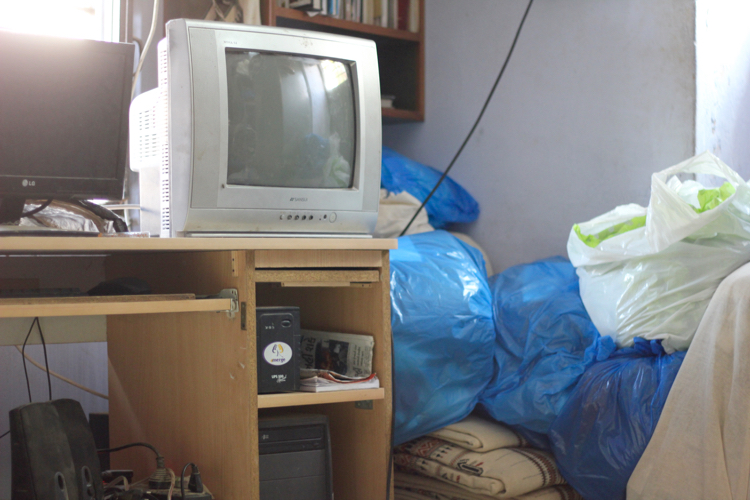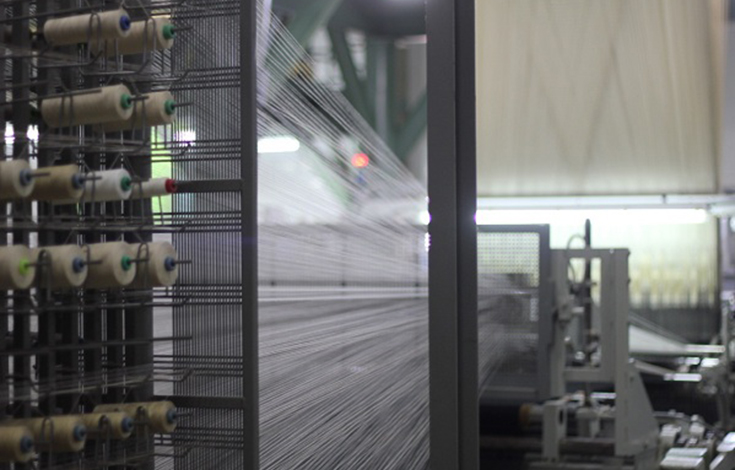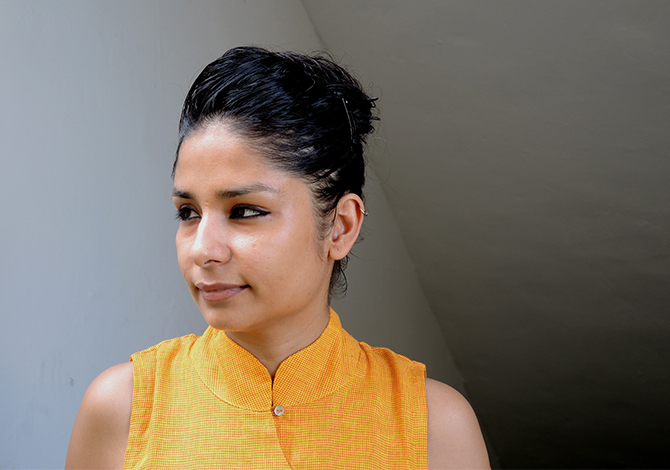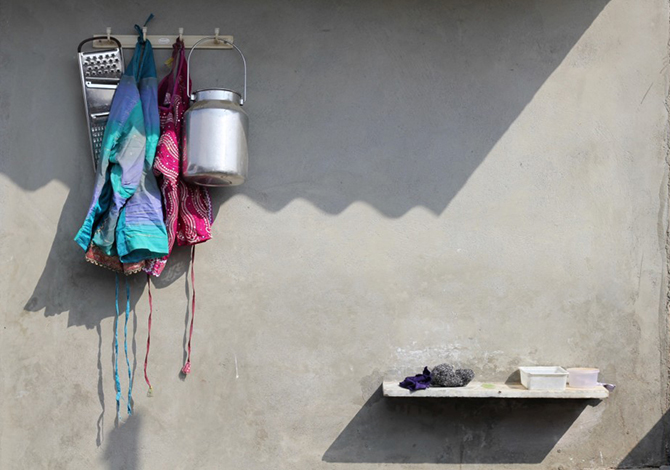Its vast, barren wetlands make the Rann of Kachchh a recurring landscape in Bollywood movies, but the iconic region was ruptured during 2001’s devastating earthquake. As support poured in – in the form of funds and NGO intervention – revival projects were founded on local textile and handicraft traditions of the regions.
Bhujodi is one of the villages that has reclaimed itself as a major centre for woven cotton and woollen textiles and Shamji is arguably its most famous resident, overseeing Vankar Vishram Valji Weaving, a multigenerational weaving and dyeing business. Over the last 20 years, Shamji has transformed the venture into a prosperous business with clients all over India and abroad. The fêted craftsman, entrepreneur and UNESCO Seal of Excellence recipient offers a personal chronicle of journey, family life, and craft. Edited excepts translated from Hindi:
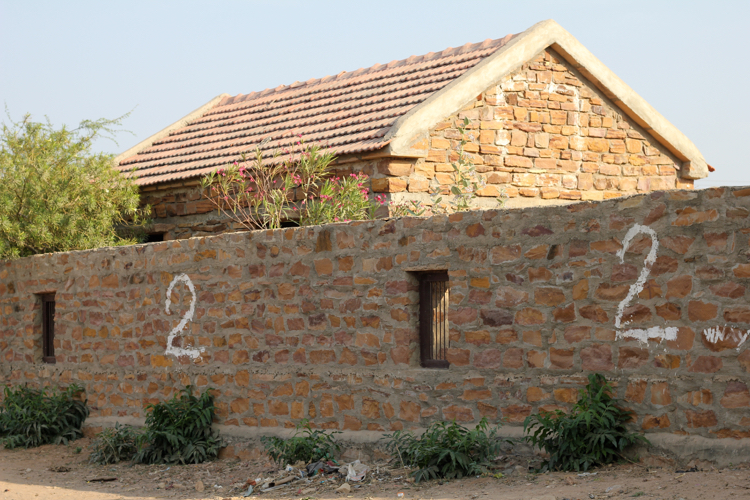
Above: image | Boundary wall of Shamji’s home in Bhujodi village
The Beginning The weaves of the Kachchh run in our blood. Our family moved here many generations earlier on the invitation of the region’s Rabari community. We’ve lived in Bhujodi for centuries and our family enterprise is centred around our homes and community.
My father, an award-winning weaver, taught me the nuances of the craft. Though I have a degree in Sanskrit, looking for a job was never on my mind. Our weaving and dyeing unit, employing 60 families, is equipped with weaving and indigo dyeing facilities where we design cotton and woolen fabrics, furnishings, carpets, stoles and shawls. When you visit, you will see us surrounded by samples—we create specific textiles for clients like Fabindia, Cottage Emporium, and Nalli. While most of our day is spent dyeing and weaving, I also make time for design innovation. I work with craftsmen from other villages, advising on new designs and colour choices.
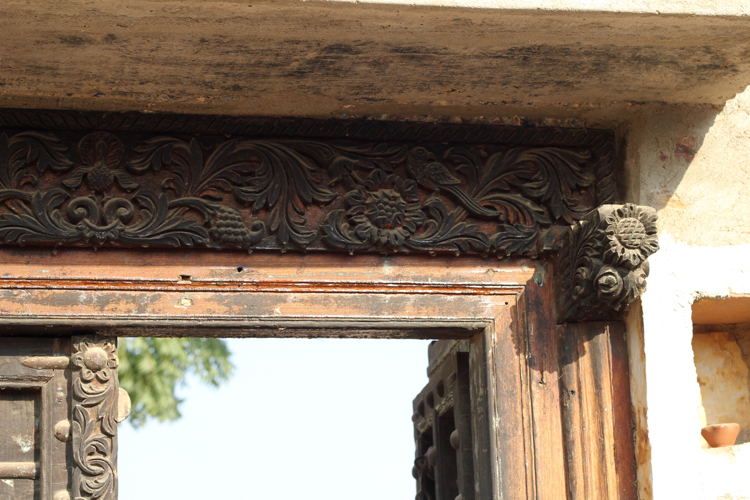
Above: images | Entrance to Shamji’s home; the in-house weaving unit
Wider Reach Before the ’60s, our fabrics were limited to local markets. But in the ’70s, an enthusiastic government official entered a blanket designed by my father for a national award. It was selected and he received the ‘Best Craftsman Of The Year’ title from Prime Minister Indira Gandhi in 1974.
This piqued people’s interest in our weaving. Students from fashion institutes got involved as did influencers like Laila Tyabji, Jyotindra Jain, and Jaya Jaitley. As visitors appreciated the craft, they sent others to see our work. With the government and designers taking notice, we began receiving invitations to showcase at exhibitions. The Mumbai Government often approached us to put our items on display and we exhibited at Delhi’s Pragati Maidan too. In recent years, I have travelled abroad. Besides American cities and Europe, I visited China and Japan recently. We find a lot of demand across the world. There is already an awareness of our crafts in countries like England, but for those like Korea we take pains to help people understand handlooms better.
What attracts me, more than exhibitions, are invitations to conduct classes. I’ve been invited to teach at design schools, art galleries, and at institutions abroad. More than just showcasing our weaving, these offer opportunities to present our perspective as craftspersons in this country.
Commerce & Community Our craft is time consuming and involves paying great attention to little details. Last year, we made a piece that took nine months to finish. A lot of people are needed on the job, so the whole family is involved. But we have reached a stage where if I don’t work for six months, our family income won’t suffer.
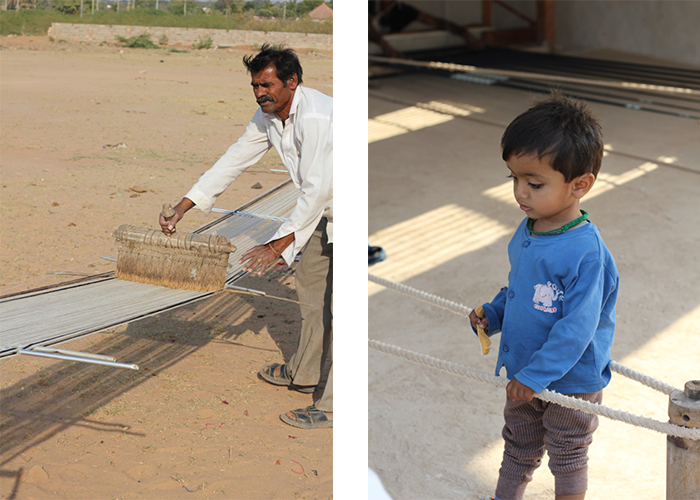
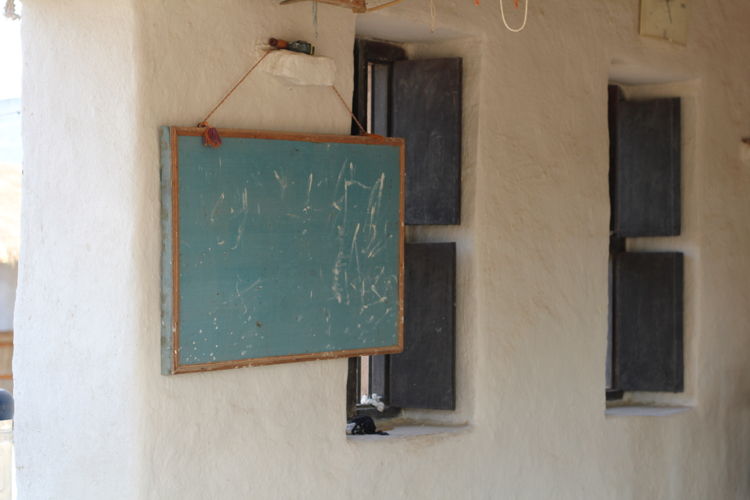
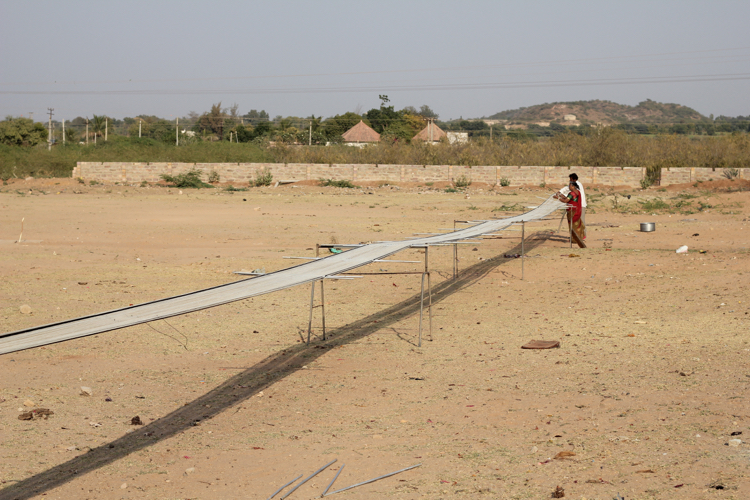
Above: images | Kala organic cotton yarn preparation; Shamji’s son; warp yarn preparation of Kala organic cotton
We are college educated, but were trained to take over the craft even as we studied. The education is for the community’s progress, not jobs. My nephew, who studied engineering, initially wanted to pursue a job in the city but turned to the business when we showed him our achievements and prestigious collaborations. Each month, we ensure group meetings with village elders to assess our progress, understand tastes and market conditions, and the future direction of our craft. Our craft involves extended family members. Nobody is an outsider. The community benefits when it’s involved in the craft and with each other—it improves the entire sector and working together is more enjoyable.
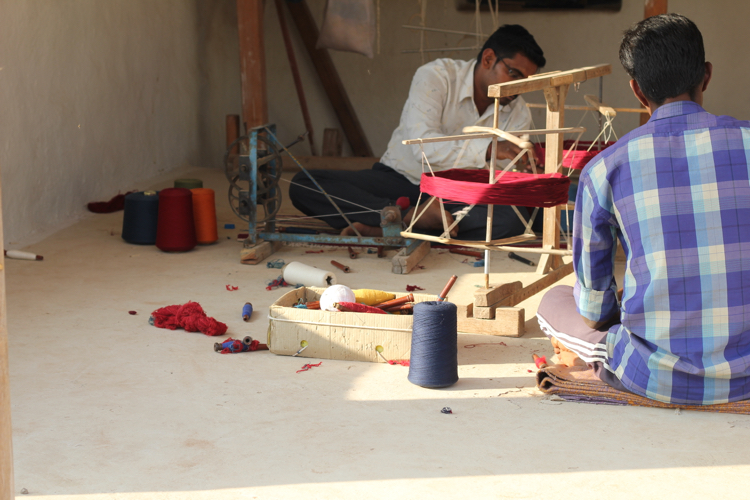
Above: image | craftsmen on handlooms in the in-house weaving unit
Quality Control Since its founding, Fabindia has been sourcing from our family. My father worked with them initially, but there was a gap of almost 20 years because they wanted lower prices. Our elders refused. We’ve been working with them again for the last 15 years. But we seem to be facing the same problems again, so we may stop working for them in a year or so. There is too much focus on pricing instead of quality.
It’s possible to make small changes in design to accommodate lower prices. But if you want us to do for INR 600 what requires INR 1000, that isn’t going to be possible. Our community doesn’t compromise on fabric quality or our distinctive weaves. If you want plain fabrics, you have to find someone else.
Signature Design A fabric from Kachchh is different from a straight weave. The highlight of our weave is an extra weft, woven by a technique typical of this place. You won’t find it anywhere else. It’s important for me to be able to find the spirit of Kachchh in every fabric woven by us, including textiles like the khadi denim. You shouldn’t be confused about whether your outfit was woven in Bhuj, Ahmedabad or Bangalore—you see it, you know it’s from Bhuj.
My father had a client from Mumbai who wanted him to weave cotton. They made samples and received orders, which continued for a few years. One day, the client gathered everyone and told each weaver to manufacture one colour each, and only that, for the next five years. They were shocked when our elders refused to weave even a metre of fabric. It’s difficult for outsiders to understand but if we work for long on plain fabrics, an entire generation of weavers will lose their skills. That was 50 years ago but we still work by this philosophy.
Above: image | embroidery sampling
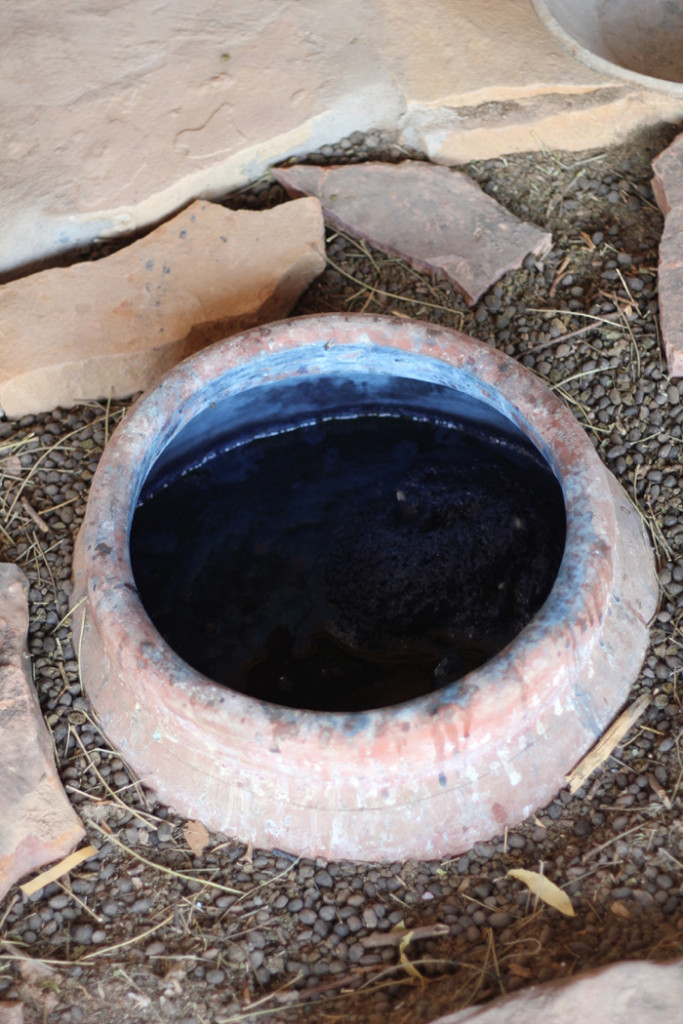
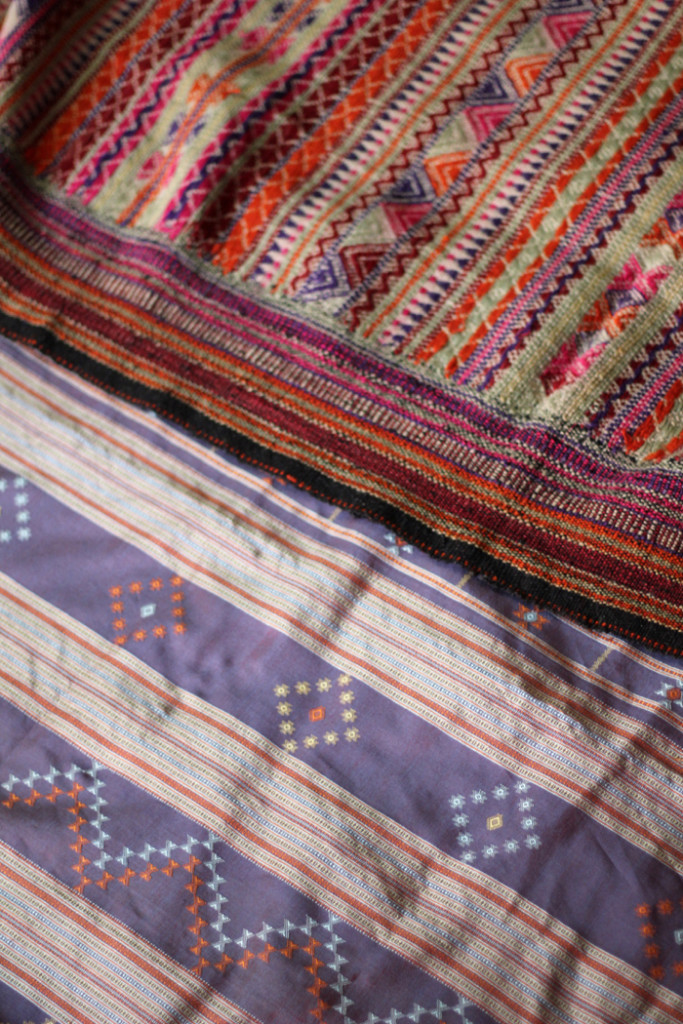
Above: images | natural indigo dye; indigo yarn on the loom; contemporary interpretation of traditional weave
Heritage Weaves Over the last three decades, I’ve gradually collected a number of pieces woven by our ancestors. We already have a small emporium of sorts next to our house, where we display and sell our wares. But for my collection—some date back a couple of centuries—I want to build a display gallery. It will be a means of tracing the craft’s history by focusing on the stories of these individual pieces. Presently, this remains a private project. I hope to secure government or external funding to realise the project.
Money is important, but we love our work. We don’t tire of it because we do it from our heart. My father once refused a client who wanted to cut the woven shawls to make outfits. But the situation has changed. We don’t tear cloth, but people ask for designs in which the fabric can be cut at every 40 inches. We plan in advance for such requests.
A few years ago, we were visited by a Japanese team. I was at the loom, halfway through a fabric that had taken five months to weave. They repeatedly asked for a price, till I had to tell them that I couldn’t attach a price tag. Our feelings are woven into our fabrics. We would quote a price when we were done with the present fabric and could start on the next one. This is how we work, or we don’t. Everyone wants money and work but it’s only worthwhile when we are interested.
Above: images | the courtyard; office and sample room
Moving Forward It’s crucial for craftsmen to receive training and support. In 1995, I went to NID intending to study there. The mandatory 3-4 years stay at Ahmedabad and high fees were prohibitive enough, and it didn’t help that I didn’t know English. Craftspersons need courses that understand the community’s needs and shortcomings. The foundation of the Kala Raksha Vidhyalaya (located in Mundhra, Gujarat) in 2005 has been a blessing. I’m part of the advisory board and many of our village boys have graduated from there.
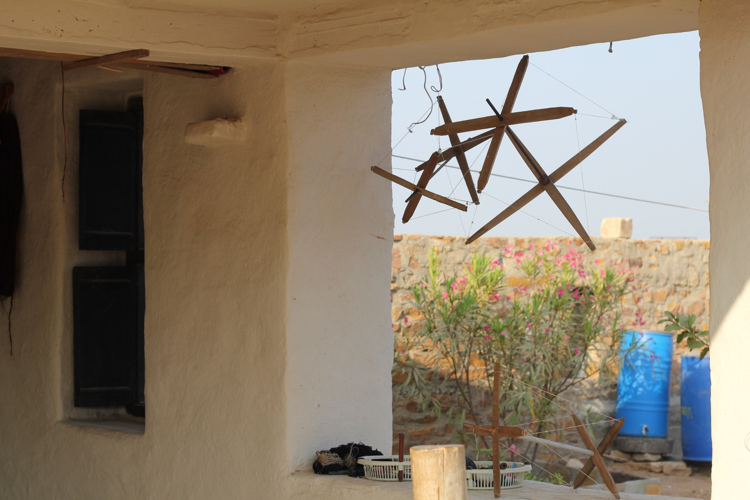
Above: image | in-house dyeing unit
The development of our craft depends on future generations. While our older craftsmen work for pleasure, the younger ones are responsible for their families. They require support and platforms to showcase their work and establish business links. We assist them with medical and educational expenses, but without the means to travel, their work remains unseen. Till the ’90s our travel expenses, food and lodging during exhibitions were borne by the government. But that has stopped. While we can exhibit at our own expense, craftsmen just starting out don’t have the advantage. Unless they are provided for, how will they move forward?


